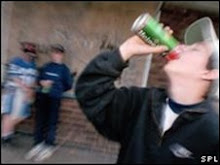Since the 1980s, there is evidence showing that there has been a curve in alcohol consumption and this is not because there are newer policy restrictions, but on other factors such as demographic changes, health concerns, and attitudes that society has on alcohol advertisement. This seems to be a positive step in the right direction that generally, consumption has decreased, however, this decrease in sales has caused changes to the alcohol industries marketing techniques (Pennock, 2007).
These marketing techniques focused on defying the consumption trends and appealing to knew markets and advertising new brands of alcohol. These markets included women, African American and youth. In the 1980s, the industry wanted to turn drinks from being looked at a “man’s” drink and appeal to women and youth, such as the wine cooler which is a marketing success story. They began to target minors and advertised in urban areas and college campuses. The marketing of beer to college students became particularly aggressive and focused on the sexual “spring break” adds and the promotion of contests that encouraged binge drinking (Pennock, 2007). At this point the industry wanted to also increase their visibility in the community and began to sponsor concerts and other events that were youth oriented. Industry continues to increase expenditures in their marketing and appeal to these new markets.
The current federal and provincial policies that have been put in place to moderate the advertisements of alcohol include tougher laws, public advertising campaigns to stop advertising alcohol and peer pressure to industry by restrictionalists (Pennock, 2007). The current debate is that there is no way to assess whether banding alcoholic advertisements have deceased the consumption of alcohol in the general public and more specifically in youth. Research has shown that alcohol advertising does influence young people. It accomplishes this by preprogramming youth to drink, attracts new drinkers when advertising different brands, invites drinkers to drink more and makes it hard for those who have problems to stop (McKenzie, 2000).
Subscribe to:
Post Comments (Atom)


No comments:
Post a Comment